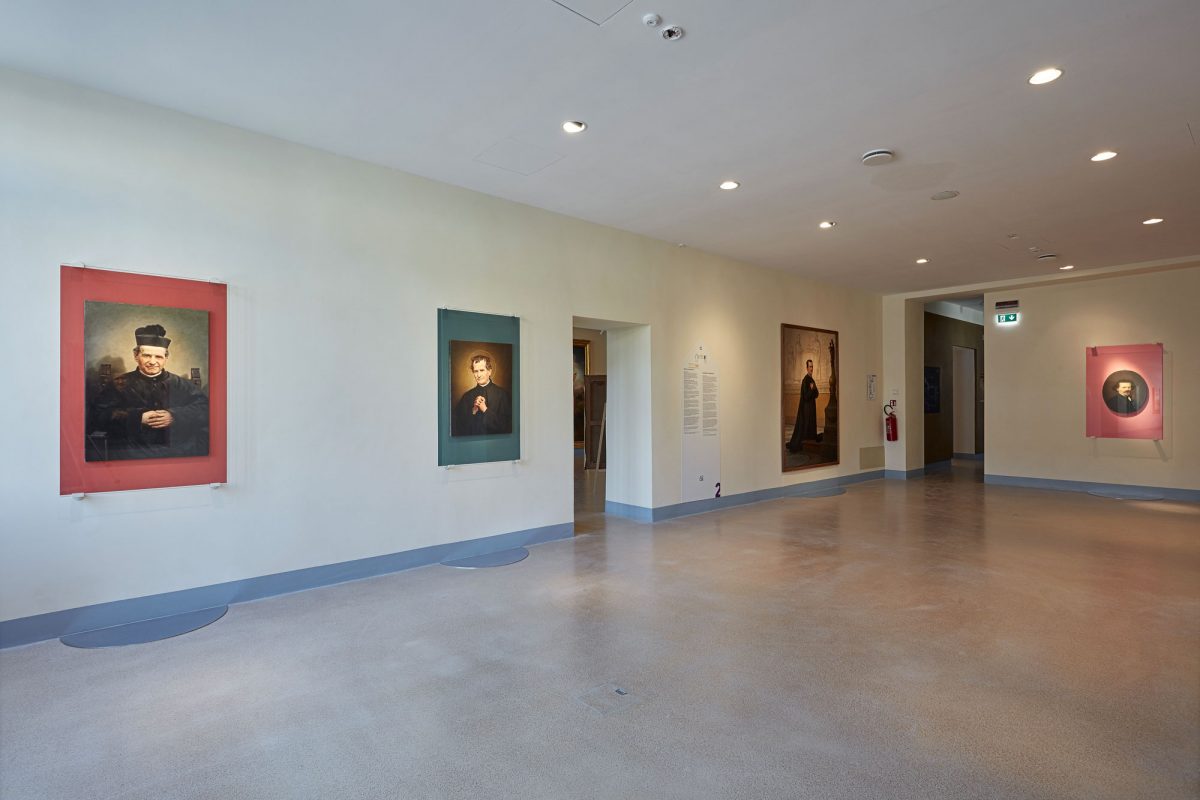This brief chronology highlights Don Bosco’s most significant activities at Valdocco. We hope it will breathe life into the historical sites of Casa Don Bosco and the events associated with them.
1846
On April 12, 1846, Don Bosco and his young people arrive at Valdocco. He transforms a lean-to shed into the Oratory’s first chapel, which subsequently served as a study room and youth dormitory until 1856, and finally the dining room for the first Salesians until 1927.
In 1928 the site was restored as a chapel. Today, the statue of the Our Lady of Consolation found here is the only original artifact from the first chapel.
1852
In 1852, the Church of St. Francis de Sales was built.
In it are the original pulpit where Don Bosco preached, the tabernacle where St. Dominic Savio had his eucharistic ecstasy, and the side chapel where Dominic founded the Company of the Immaculate Conception in 1856.
1853-56
These three years were filled major construction projects, beginning with the wing for Don Bosco’s Camerette or personal rooms. Next came the demolition of the Pinardi House and Chapel to allow the construction of a new building between the Church of St. Francis de Sales and the 1853 Camerette wing.
In the basement of this section, the kitchen and the boys’ first dining hall, both dating to this period, have been restored.
1856
On the second floor, a humble canvas enclosure marks the spot of Mama Margaret’s bedroom, the site of her passing on November 25 1856, and home to her few earthly possessions.
1858
The Oratory’s expanding enrollment required the building of a second dining hall under the Church of St. Francis de Sales. Today, this hall exhibits collections from the former Valdocco Marian museum and the treasures of the Basilica. Until 1927, this space also served as a small theatre, where John Cagliero’s first sonatas were performed.
1859
This was the pivotal year in which Don Bosco founded the Salesian Congregation. The hand-written minutes of the foundation are on display in the room where they were signed: Don Bosco’s former bedroom, where he lived until 1861.
1861
After a further building expansion in 1861, Don Bosco moved into a new bedroom which also served as his office until 1887. After major renovations and meticulous scrutiny of the archives, this room with its original furnishings has been restored to the way Don Bosco had it during his lifetime.
1868
In 1868 the Basilica of Mary Help of Christians was completed.
On display are the wooden model for the main dome and some early paintings commissioned for the Basilica by Don Bosco and his first successor, Fr. Michael Rua.
1876
In 1876, two rooms were added to the Camerette: a secretary’s office (later used as a chapel), and the corner room in which Don Bosco would die twelve years later. During Don Bosco’s active years, these rooms also served as a reception area for the saint’s endless visitors.
1886
As Don Bosco’s health deteriorated, Turin’s Cardinal Alimonda gifted him with a wooden altar for his personal chapel beside his bedroom. As a fitting tribute, this altar where Don Bosco celebrated his last eucharistic celebration now graces the new Casa Don Bosco’s Chapel.
On display in the former chapel space is the armchair in which Don Bosco’s body was placed to receive those who came to pay their respects on the day of his death.
1888
On January 31, 1888, in the corner bedroom adjacent to his regular room, the sun set on Don Bosco’s days on earth.
The Museum honours the place of Don Bosco’s passing with a sober shrine: his clothing laid out where his deathbed once was.
The room retains a noble simplicity that invites visitors to remember the life and the gift of St. John Bosco, the Father, Teacher and Friend of the young and the poor.



FOLLOW US.
Facebook
Instagram
Youtube
Vimeo
Linkedin
Pinterest
Subscribe to our newsletter.
Receive updates on new exhibits, conferences and events at Casa Don Bosco Museum.